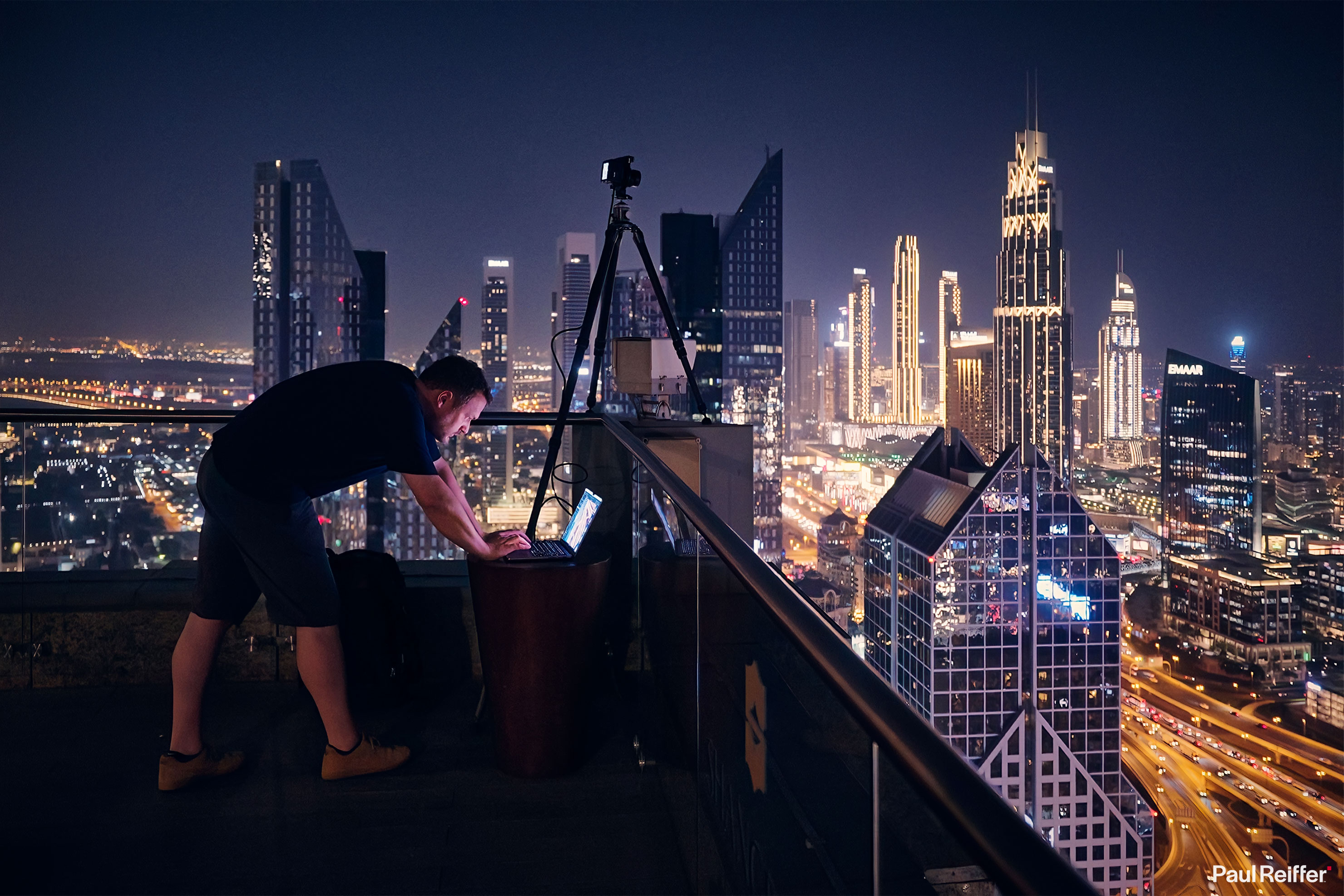Whether meant as a verb or a noun, the headline “Phase One Presents” has applied to a few lens & system launches this year. Now, finally, their latest in the lineup – the stunning XT Rodenstock HR Digaron 70mm Tilt f/5.6 lens – is ready to meet the world:
Designed to capture incredible levels of detail from front to back, by altering the plane of focus at wide-open apertures, this is the sort of focal length that really shows the power of adding tilt to a camera & lens combination. While the 40mm tilt has become my go-to wide-angle lens for landscapes, this latest 70mm edition presents some interesting opportunities for closer frames of familiar places.
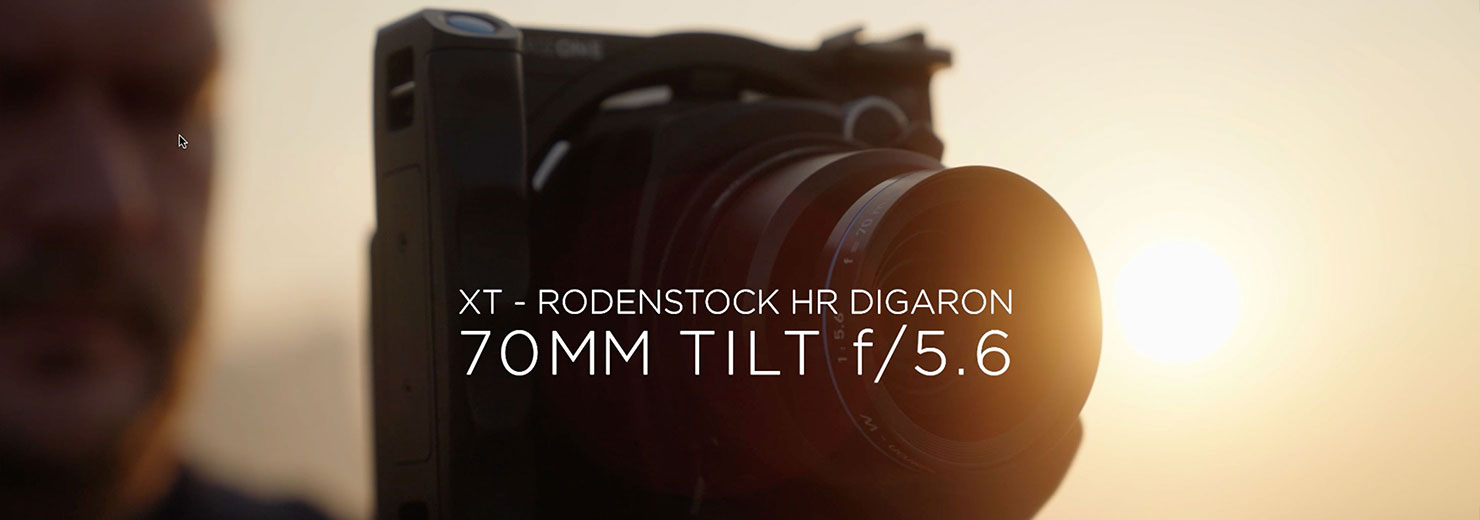
So where better to put it through it’s paces (along with Apple’s latest M3 Max MacBook Pro) than the streets, and sands, of Dubai…
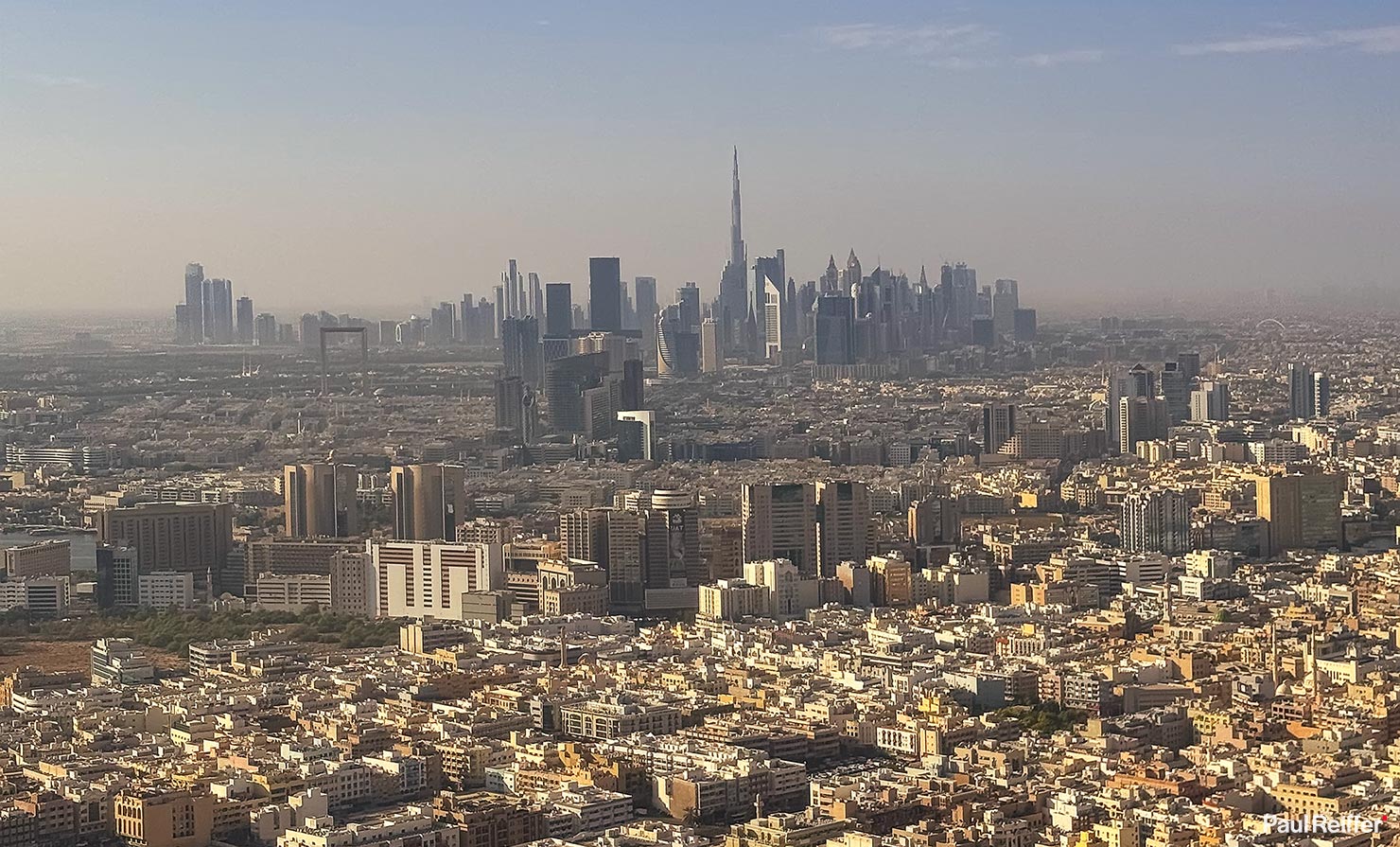
It’s hard to mistake the skyline of this megacity, from any angle – not least of which as you land into DXB looking out of the plane window across one of the fastest growing metropolises in the world. Not only home to the world’s tallest building – the Burj Khalifa (for now), this is a city full of megascrapers in every direction, yet surrounded by sand and ocean as far as the eye can see.
So together with Tom and Solomon from Evoku – we set out into the dramatic desert landscapes and dynamic nighttime cityscapes of Dubai to film, capture and put the new glass through its paces.
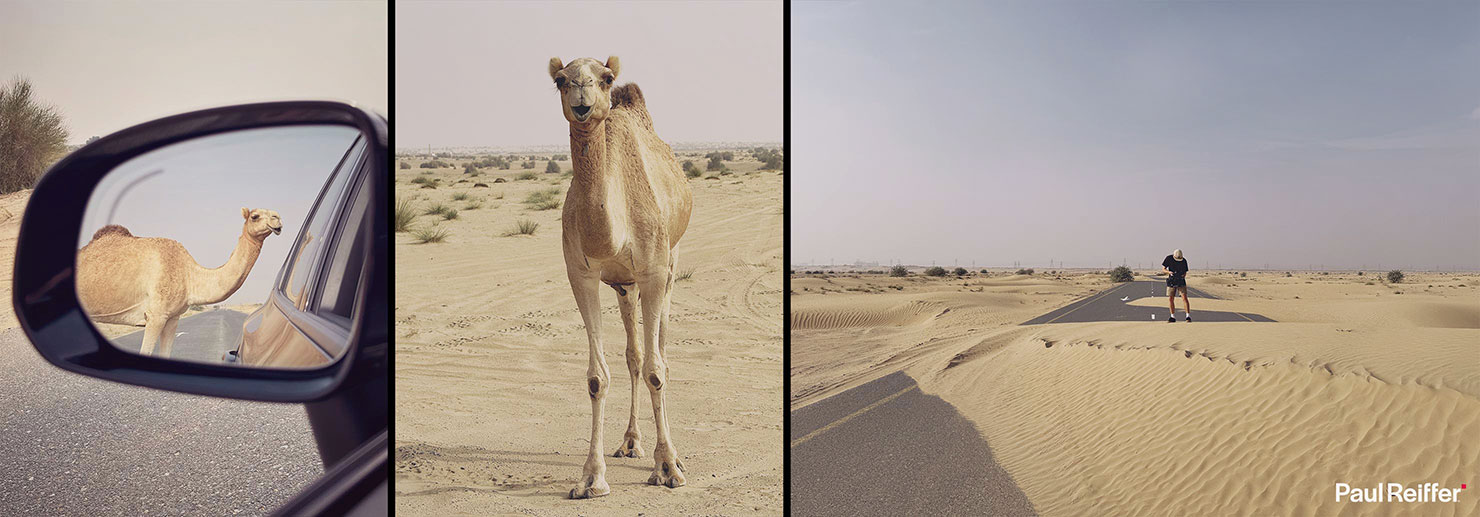
You don’t have to venture far outside the city limits to be reminded that you are, in fact, in the middle of the desert. Camels make their presence known, as does mother nature – the winds wreaking havoc over the best-laid plans of highway engineers from the past.

It’s funny – “the shots we need for filming are different to the shots you need for print” – a statement I’ve heard a few times, but never has this rung more true than when I’ve been sat in a 4×4 hurtling towards a cameraman who doesn’t seem to be moving out of the way.
And with that particular dune well and truly “bashed”, it was time to set up the office…
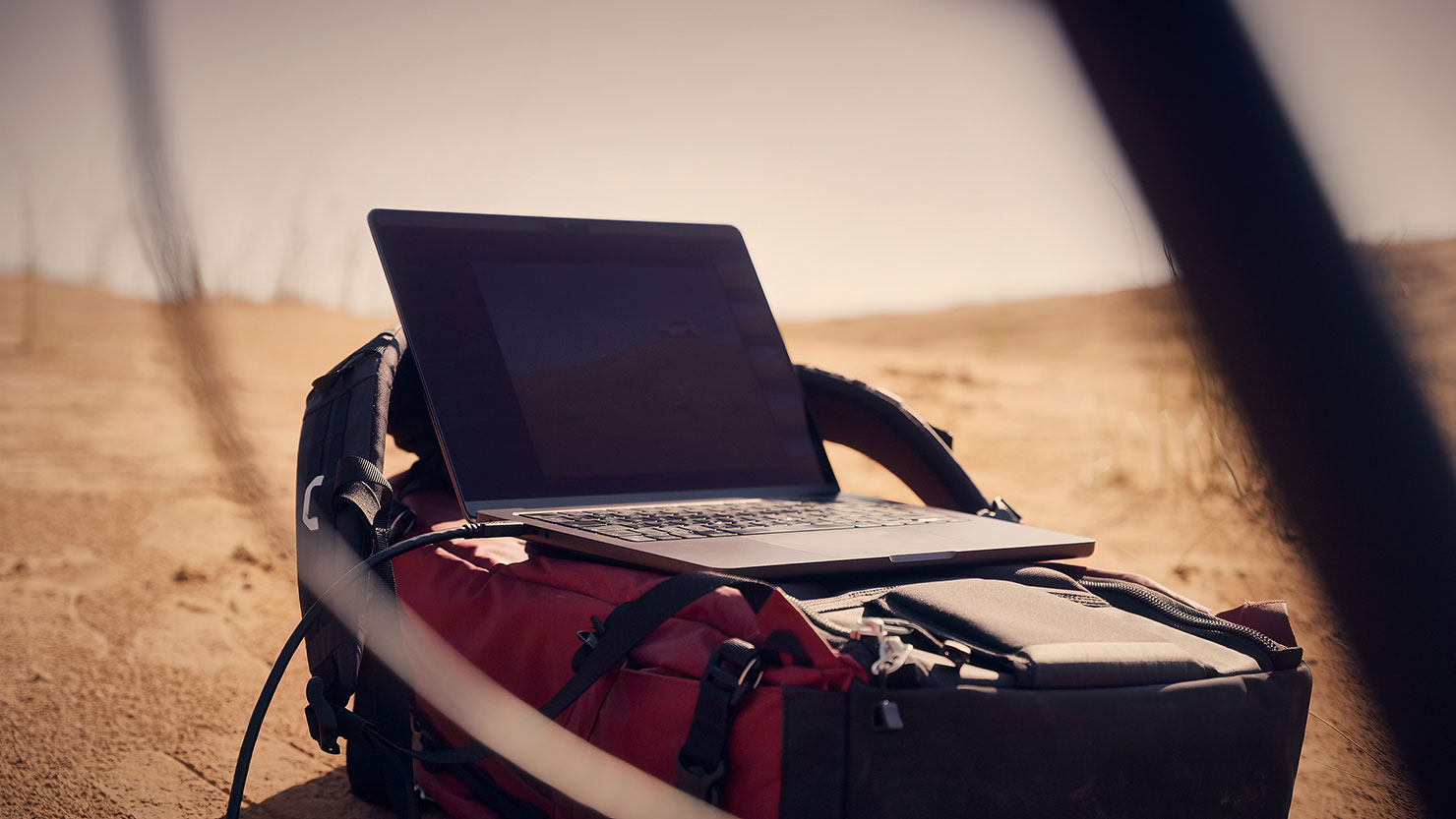
These Apple Silicon MacBook Pros never fail to amaze me – even when I try to catch them out.
Sat in the blistering heat of the desert, this space black unit didn’t even bother with its fan (apparently it has one, never heard it!) for the entire time I was connected to my camera for these test shots.
(Although yes, if I had a built-in fan, I can assure you it would have been on constantly as that blazing heat fried us for a couple of hours.)

So why were we tethering in the middle of the desert?
Simple – when it comes to this level of detail, on these types of lenses, there isn’t a camera screen out there that’s capable of truly showing whether something is pin sharp through and through. An iPad running Cascable? Sure.
But even better still, for me, is the full-blown Capture One application right there at my fingertips, running a session for each shoot on a crisp, bright, display with my own workspace. (Plus it gives me a third data backup should any one of the components spontaneously combust in the heat!)
Of course, in an ideal world we’d have a digitech with trolley, sun shade, beer chiller, fan-assistants and so on – but sometimes, well, you just have to keep things light.
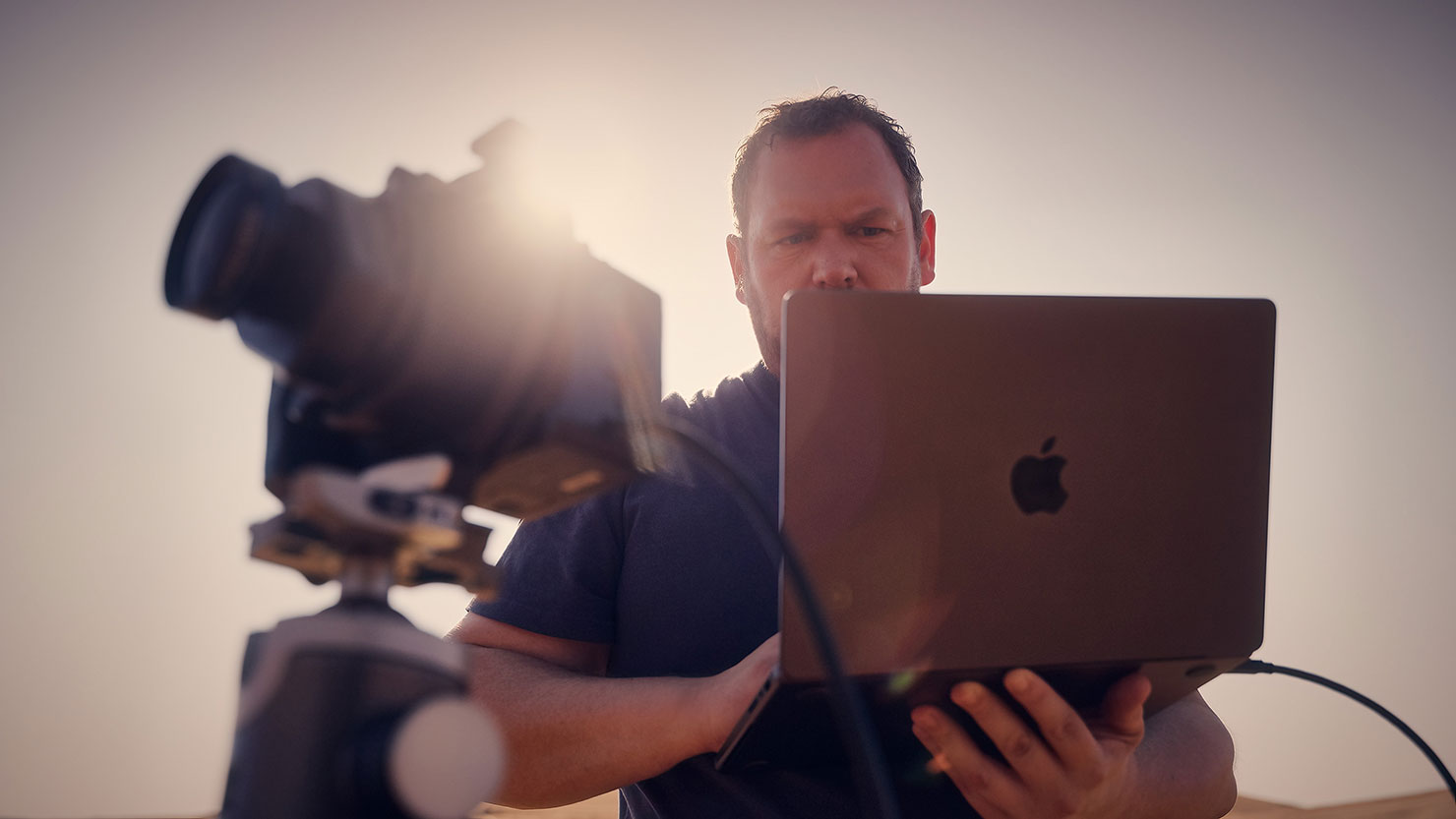
Finding sharp focus from front to back of the frame is easy when using a big screen. Granted, it would have been easier still with a hood or overhead cover – but that’s not going to fit quite as nicely in my bag while I’m out walking – and the MacBook Pro 14″ retina screen performed excellently, even in the midday sun.
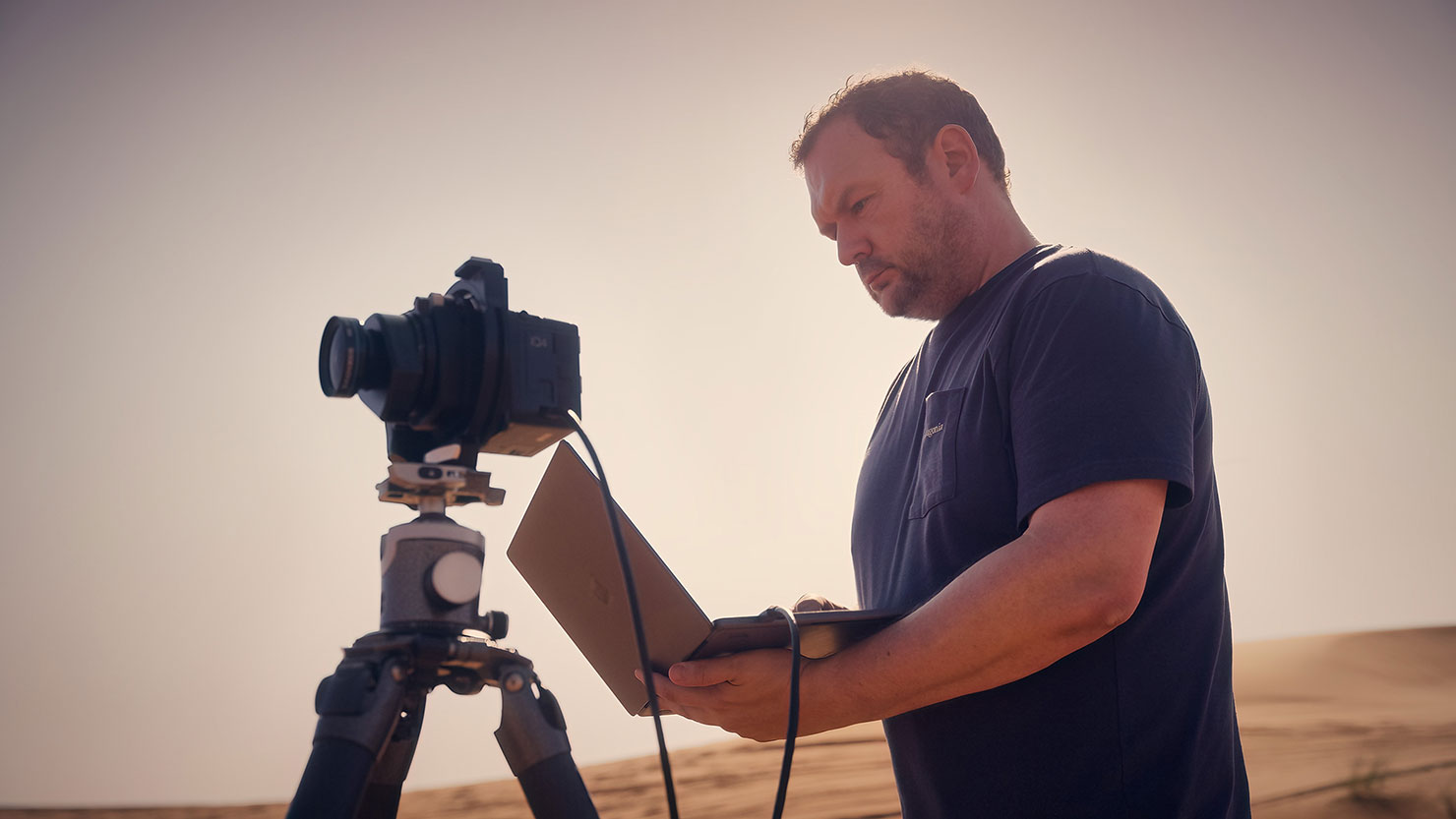
So – that’s tethering in the desert (and you can see those test shots a little further down), but what about cityscape tethering on the rooftops (or even on a comfy terrace with an endless supply of Diet Coke)?
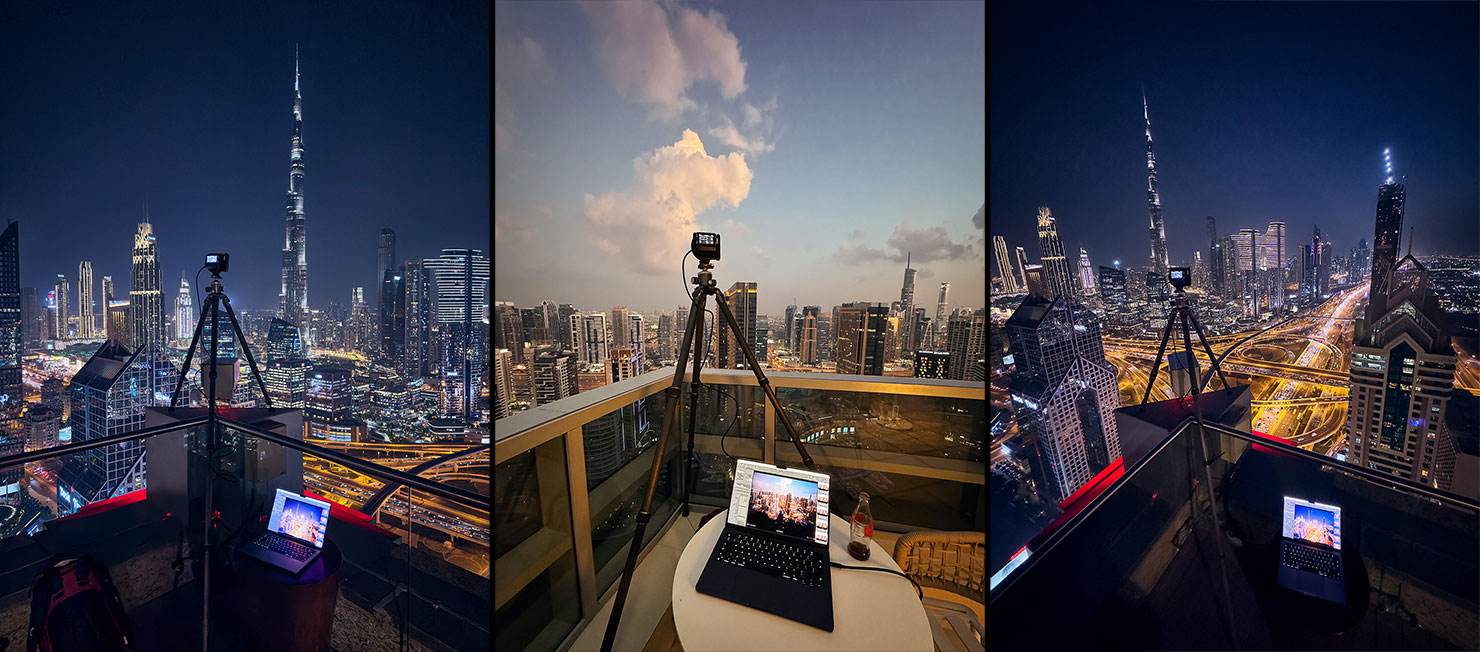
I’ve been asked a few times over the years – “why would a cityscape photographer tether in the field?” – and the answer’s actually quite simple when it comes to very high vantage points:
So I don’t have to touch the camera (or tripod) anywhere near as often as I normally would.
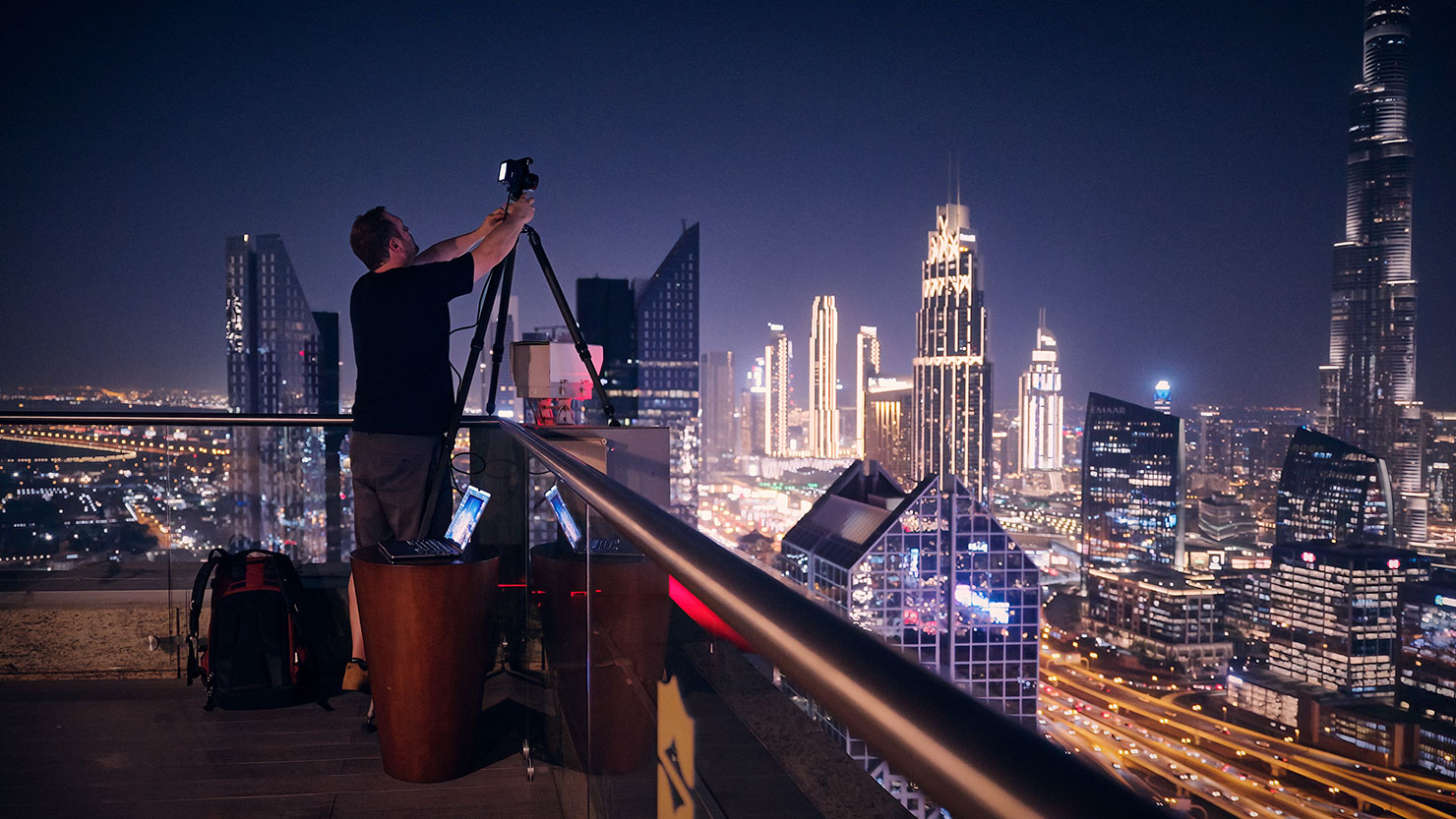
Sometimes, even from up here, I just need to get that little bit higher still, in order to get the angle I want.
At 2m high, my tripod can do it – but my arms can’t, and there’s no way on earth I can see that screen to check detail and focus all the way up (and over) there once the camera’s in place – so I tether.
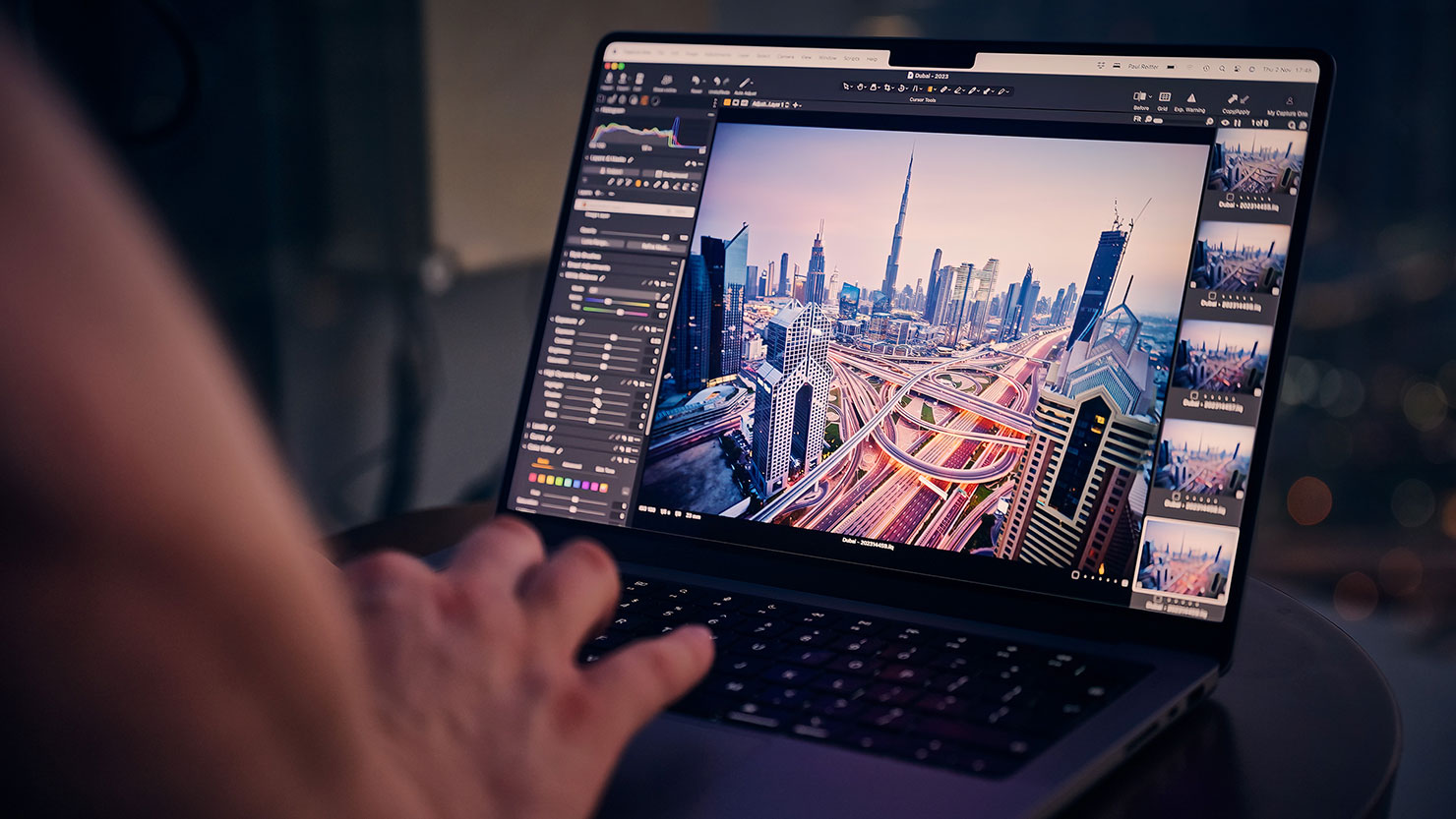
And that gives me full camera control, along with a huge amount more confidence to know that with each click (or key press), I’m getting the exact shot I want.
On the XT, I still need to manually focus (on a wide lens that tends to be to infinity for cityscapes), but once my composition is set, the idea is to not need to touch that digital back for the evening. There’s an added bonus too – with power trickling across the USB-C cable into the camera, we can keep going for hours…

Reviewing in-the-field is made all the more easy when using the same application I’ll be editing with later on. Adjustments are quick, obvious, and again I have that all-important extra backup on my MacBook Pro (or iPad) should the worst happen to my memory cards or kit.
(Note: When tethering on rooftops – it can get windy up there – so lock down both your tether cable and your laptop, and secure anything that moves, kids!)
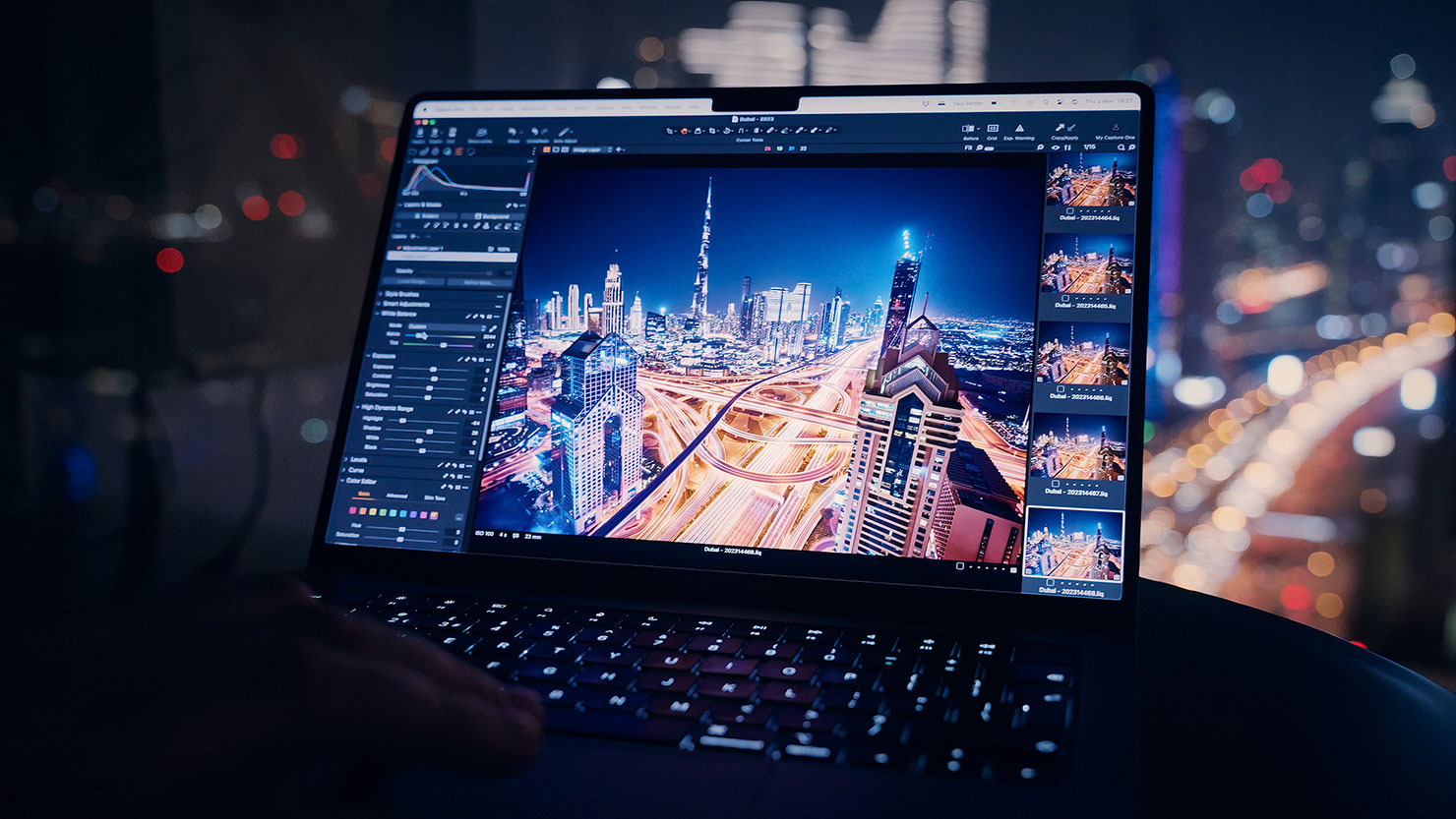
Now these shots are (obviously) not 70mm images – they’re captured with the excellent Rodenstock 23mm XT lens instead – but the logic holds even more true for tilt-enabled optics.
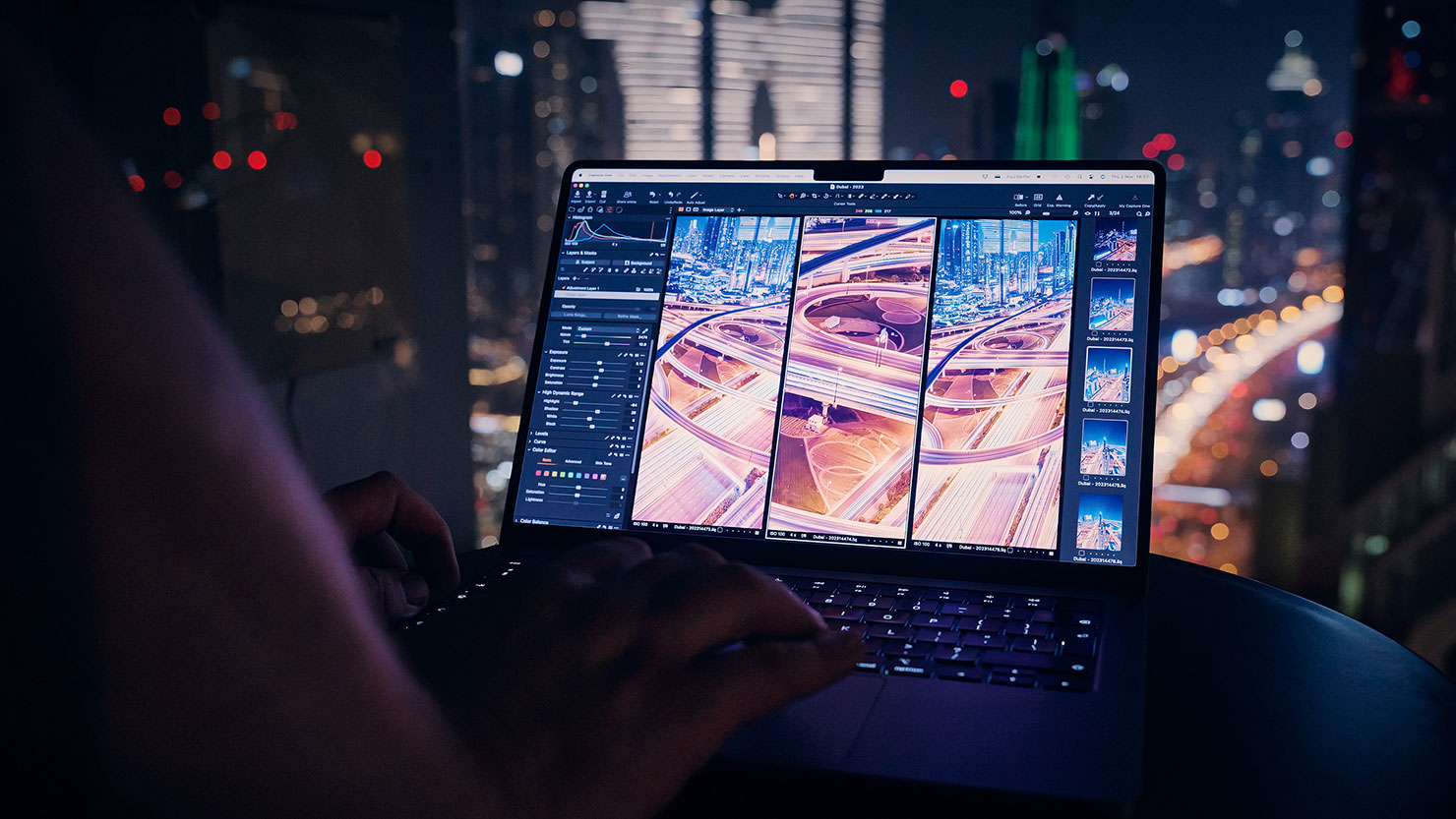
If we think back to the process of locking in a tilted focal plane (more on that in my previous article, here) – doing that while leaning over a rooftop, trying to see a small screen that’s 9″ above your head to “check focus”, just isn’t going to happen.
While it’s an extra bit of kit to carry (regardless of whether that’s an iPad or MacBook Pro), the risk of a bad image simply isn’t worth the weight saving for me, especially we have access to such an incredible place to shoot.
So up we went with the XT Rodenstock 70mm tilt lens and all of my kit.
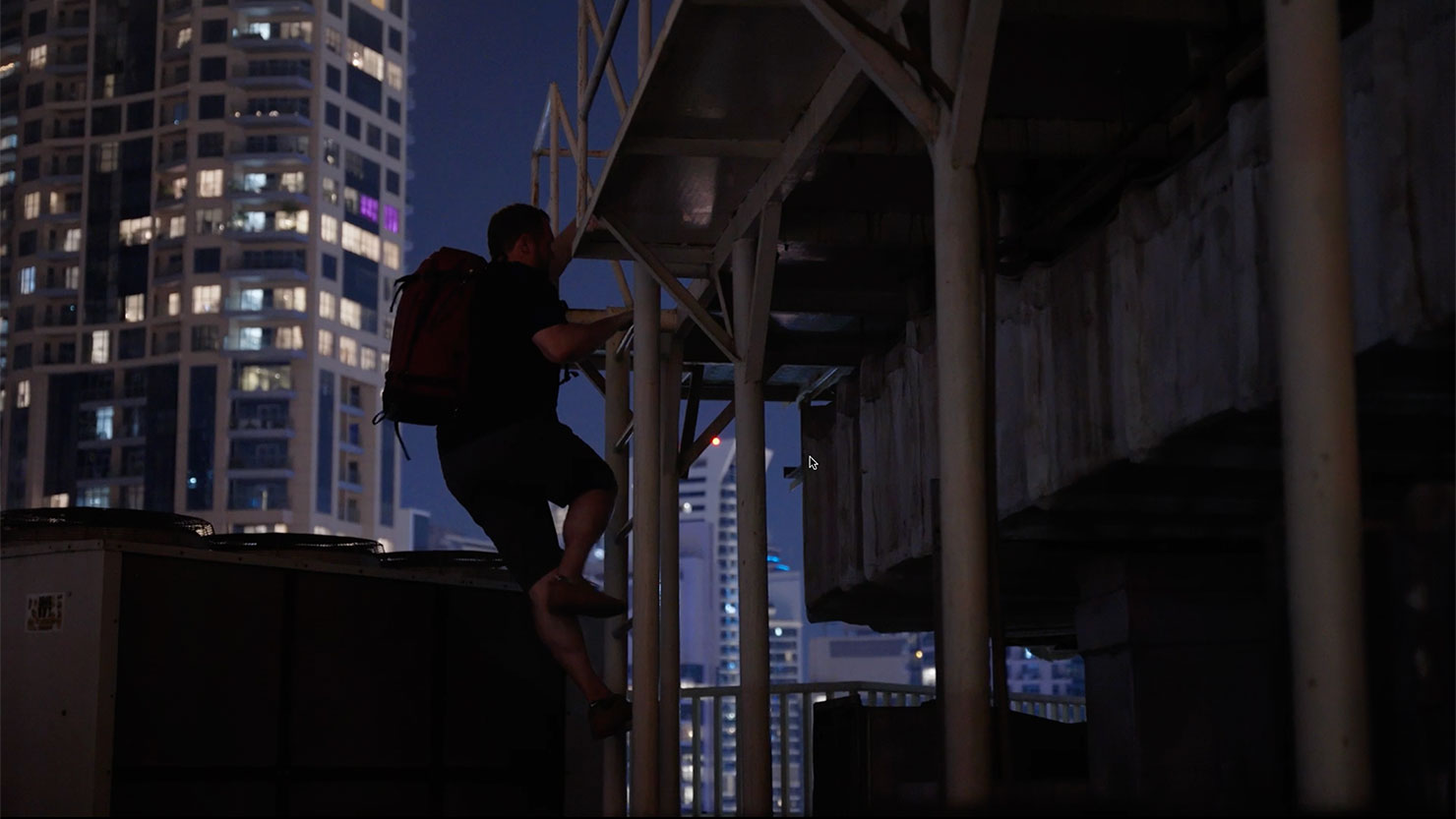
Choosing between the Marina and Downtown areas to shoot (and film) was a tough call, but given we were there to show how dynamic the tilt option makes our focal plane, the view out over the newly opened Museum of the Future won centre-stage for this series.
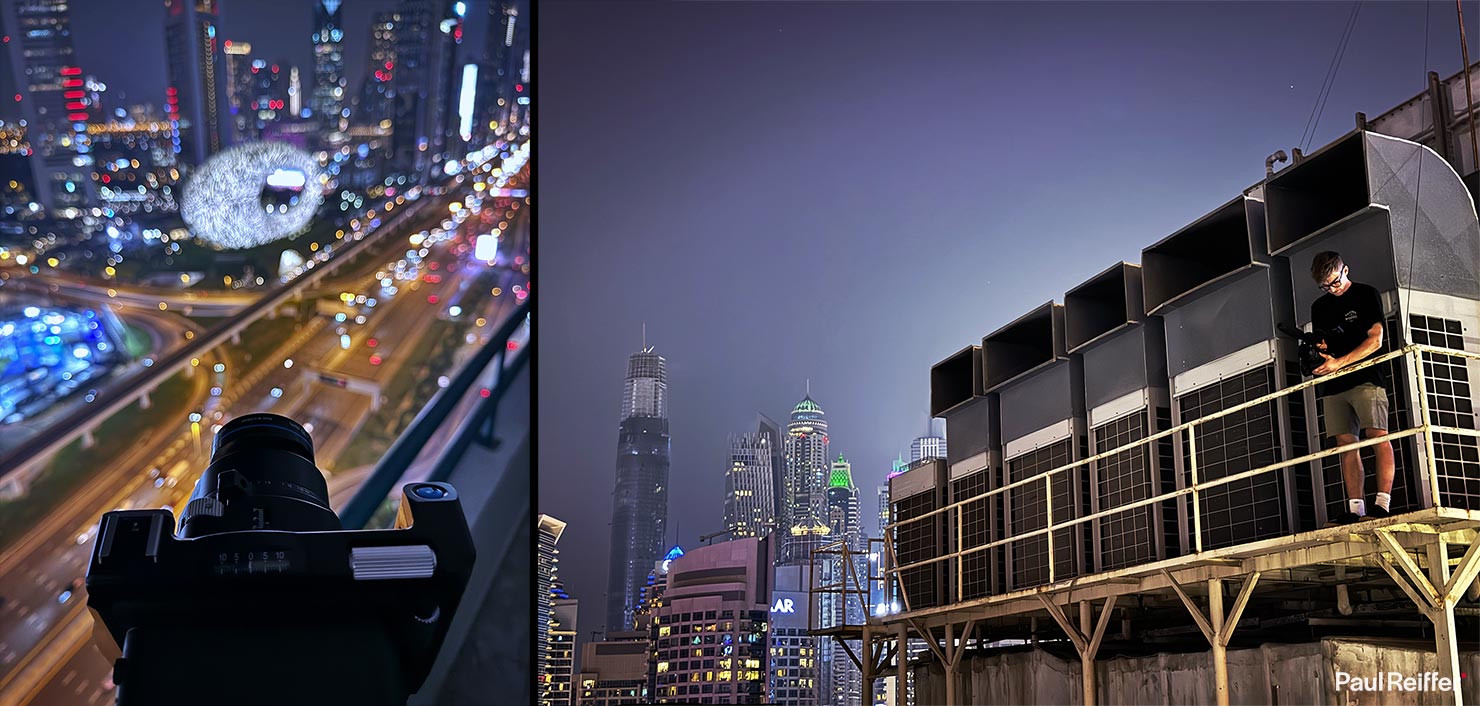
So what of the results?
Well, quite a few clicks later, along with a bit of trial and error with the larger 5º tilt (increased from 3º on the 32mm and 40mm options) and we had the demo shots done – each showing a new capability that the 70mm tilt brings to the Phase One XT when shooting at around f/8.
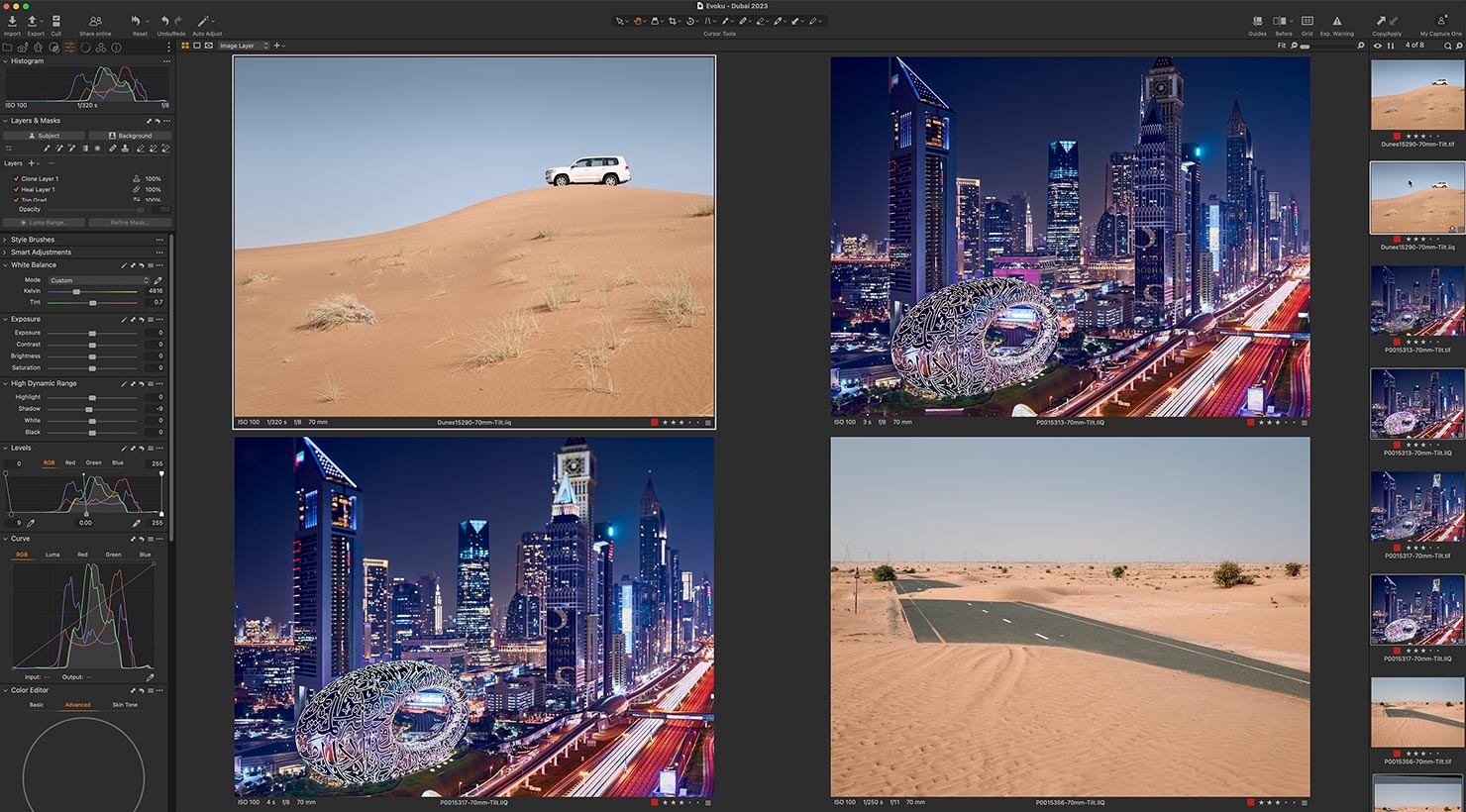
A fairly normal scene, “car on a hill” – nothing particularly special there, until we consider that the plants in the foreground were no more than 8ft away, while thar car is quite some distance out there (I know it was a long way away, as I forgot a cable in the car – doh!)
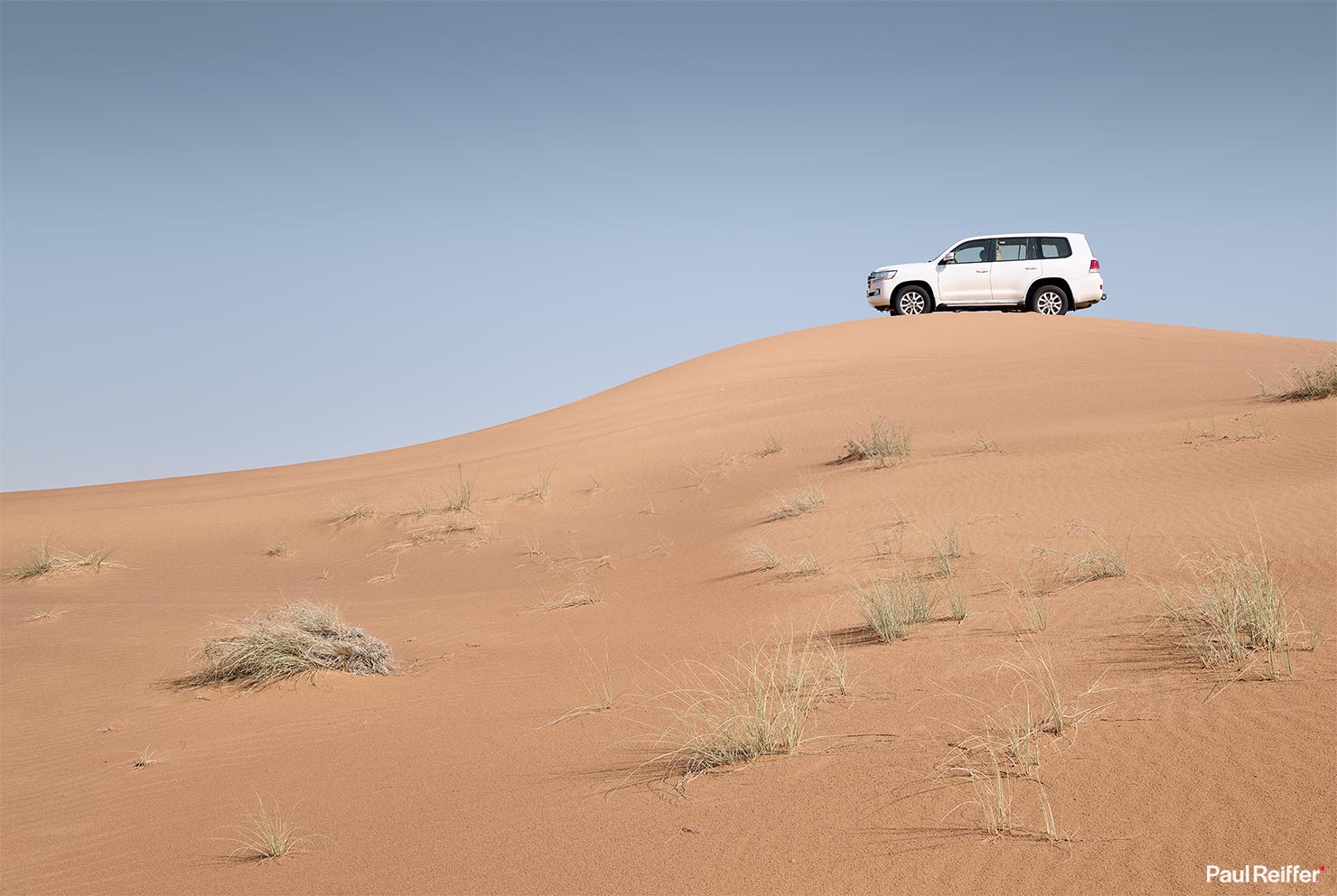
By my calculations, at 2m out (front focus), I’d have a 62cm depth of field at f/8 on this lens when “flat”. Nowhere near enough to capture the entire scene. Of course I could stop down to f/16 to get an incredible 135cm instead – but I’m introducing diffraction and not gaining anywhere near enough DoF to fix the problem either.
My hyperfocal distance would come in around 12m away – giving me a huge 213m DoF – but would stop short at 6.5m away from me, leaving the foreground blurry.
Playing with focus around 2-3m away would always fall short of the car being sharp, and pushing to 4 or 5m out would leave the foreground plants soft instead.
So – instead – we tilt…!

And it doesn’t actually need much; 2 or 3 degrees of forward tilt in this case was plenty due to the way the hill raked up away from where we were stood – but that single adjustment made an impossible shot entirely, well, possible.
So when would we use the full 5º of tilt that this 70mm lens is capable of?
How about on a completely flat desert road, where I want details all the way from my feet (well, 5ft away from the camera) to infinity? A virtually horizontal focal plane, while the camera stays completely vertical with no distortion.
Pushing the tilt dial all the way forward to its max (which is actually a tiny bit more than 5º it seems…) really did prove its worth.
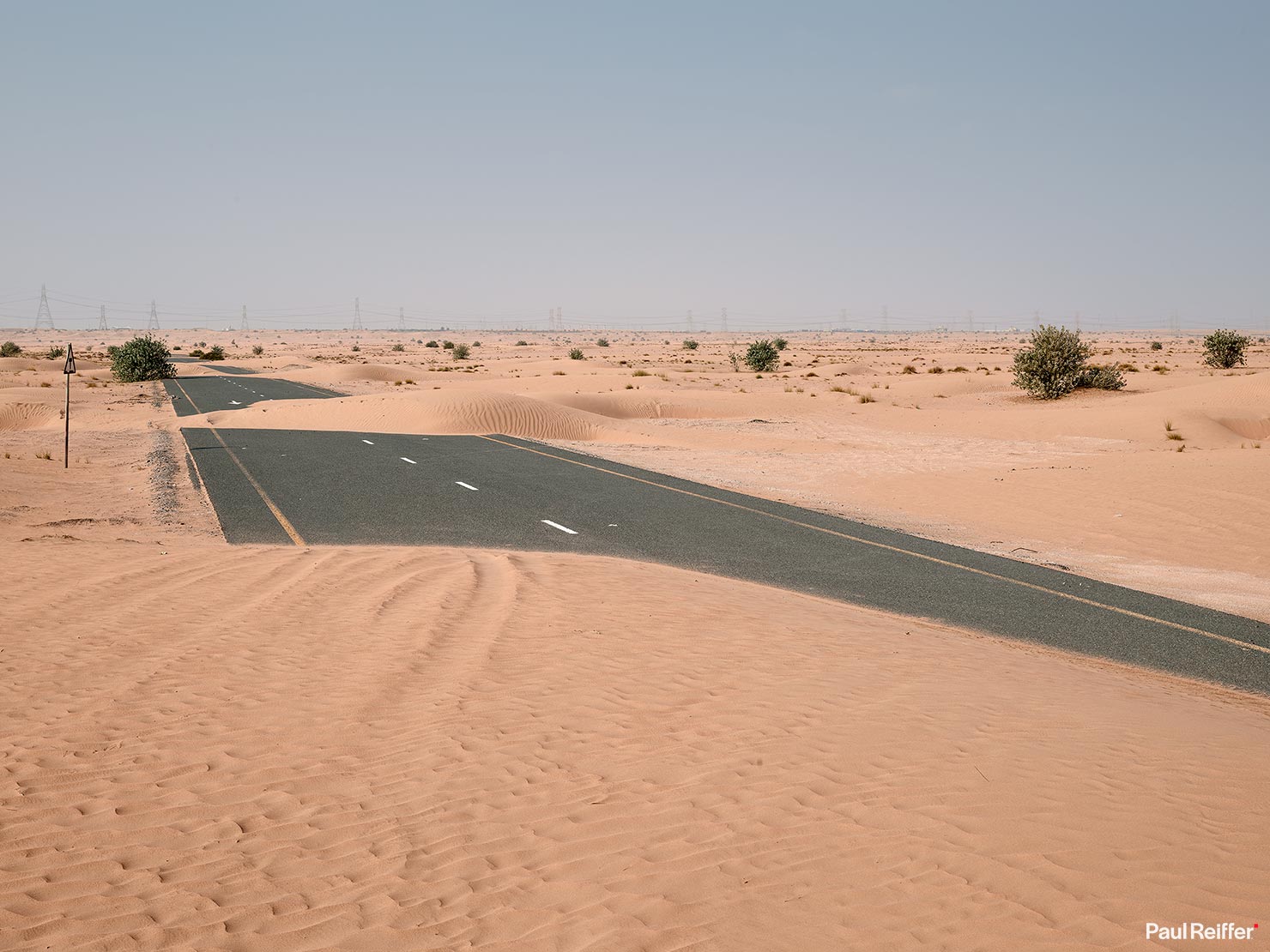
Granted, this was at f/11 – which is about as far as I’d push any Rodenstock lens in reality – but looking at my screen through the tether, every element in the entire scene was tack-sharp.
From the grains of sand at my feet, to the tarmac road that’s being subsumed by the desert, the distant signs and even buildings on the horizon – without that tilt option, you wouldn’t believe this was shot with a 70mm lens unless it had been focus stacked. (And focus stacking gives us all manner of nightmares with moving trees!)
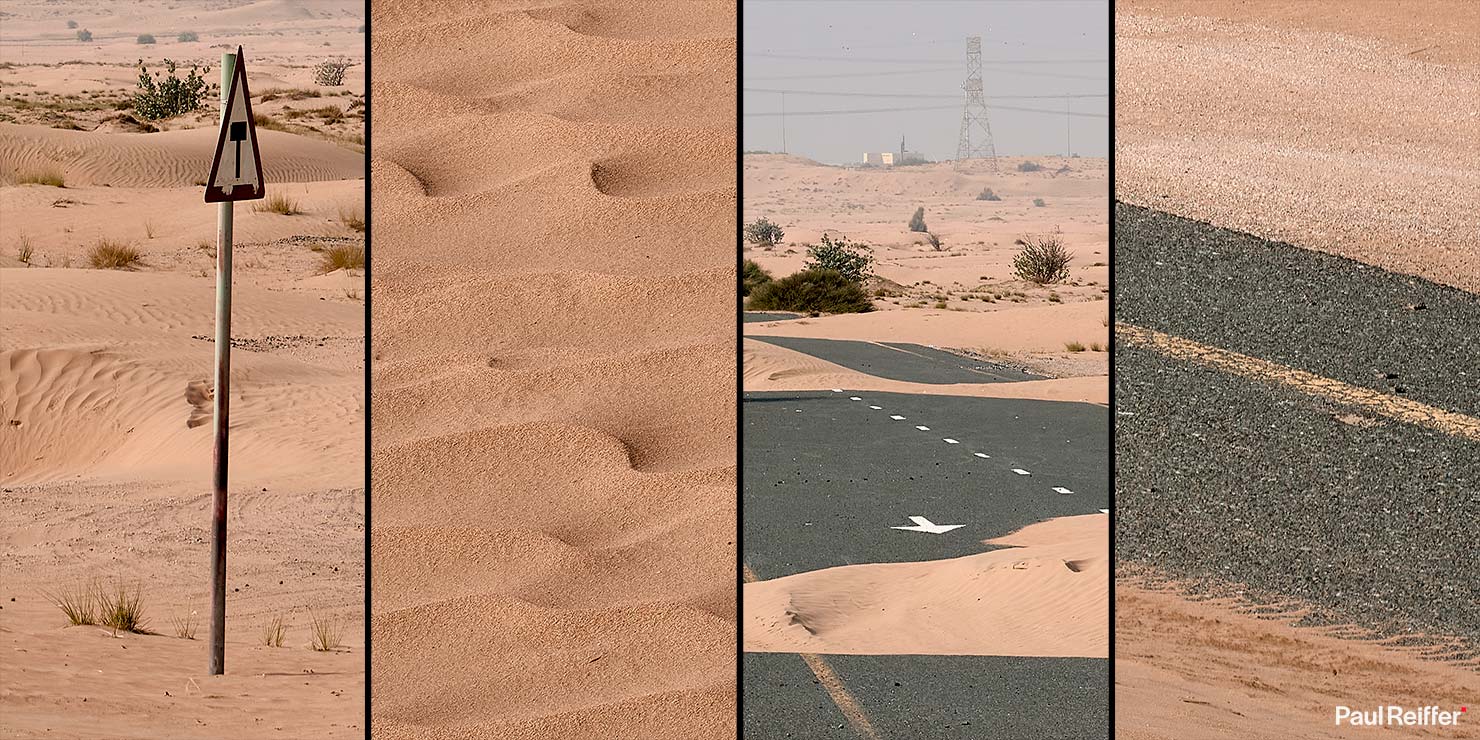
To be fair, I did get slightly concerned at one point – the pylons on the horizon seemed a bit “muddy” in one or two shots, leading me to try and fix through focus and tilt until I realised it was the heat haze, not the depth of field. Every day’s a school day, as they say…
So what about the city? Shooting grand vistas at night in a city is usually the domain of my ultra-wide lenses, and of course I also shot this same scene at 40mm for that reason (again using a touch of tilt).
But this was an opportunity to play with another side of a tilt-shift lens: negative tilt, and miniature scenes.
Sure – the Museum of the Future made for a great target at f/8 – while keeping every other object in the scene, even beyond the Burj Khalifa, just as sharp with only a tiny bit of positive tilt.
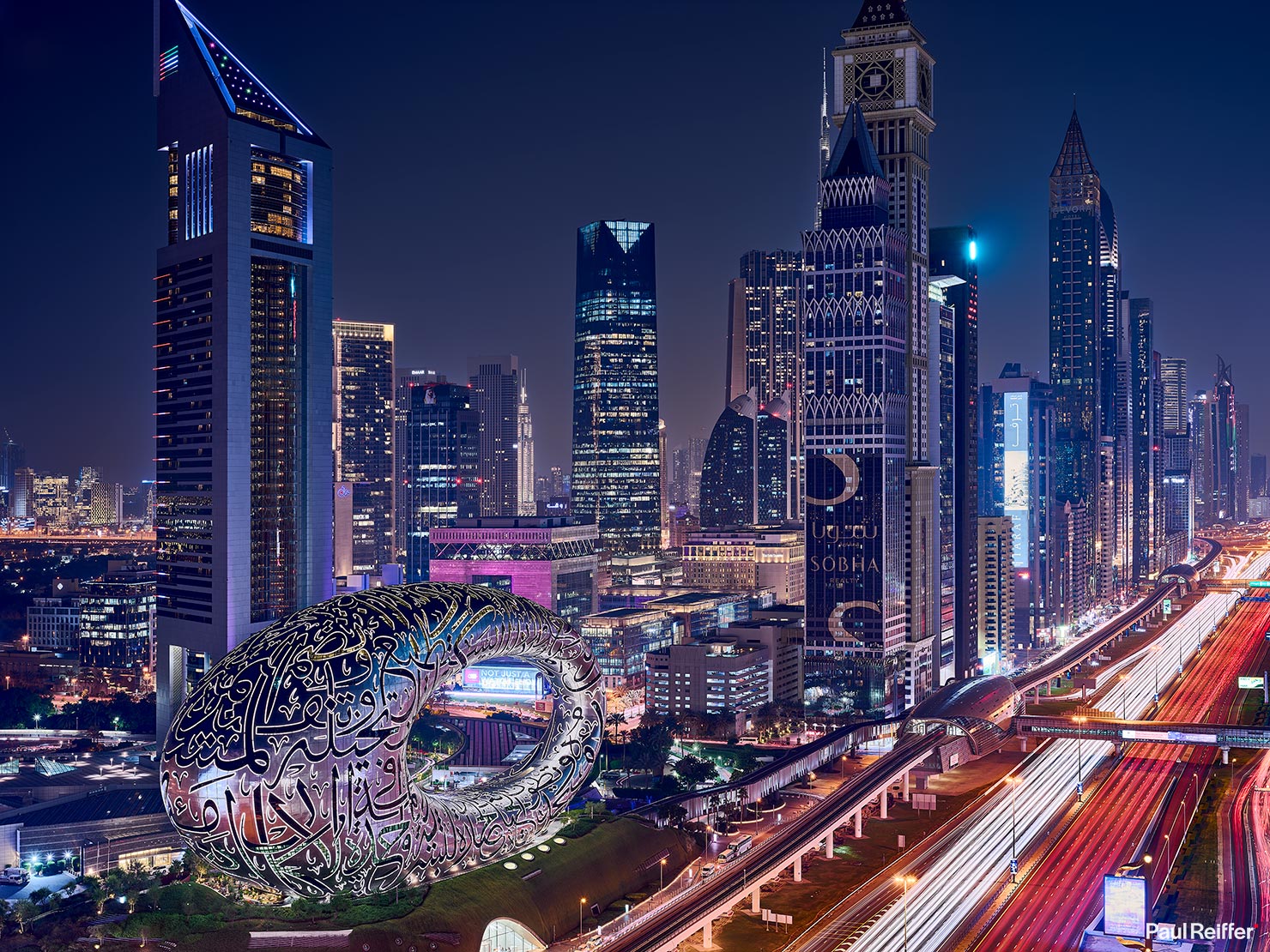
But it’s when you add negative tilt that things can become a bit more creative.
We’re so used to trying to expand our depth of field that sometimes we forget these tilt lenses go the other way too – forcing the focal plane in reverse, limiting that depth entirely.
The result? In a way that mimics when we look closely at a miniature model with our own eyes, the forced reduction in focus, even for a scene that’s quite far away, tricks our brain into seeing a tiny world instead of a grand cityscape:

With that building at that distance, I’m pretty sure I’d need something like an f/1 lens to isolate the focus to that extent without any tilt – but these results bring some new possibilities to the table for future shoots when we look at the two side-by-side, up close:
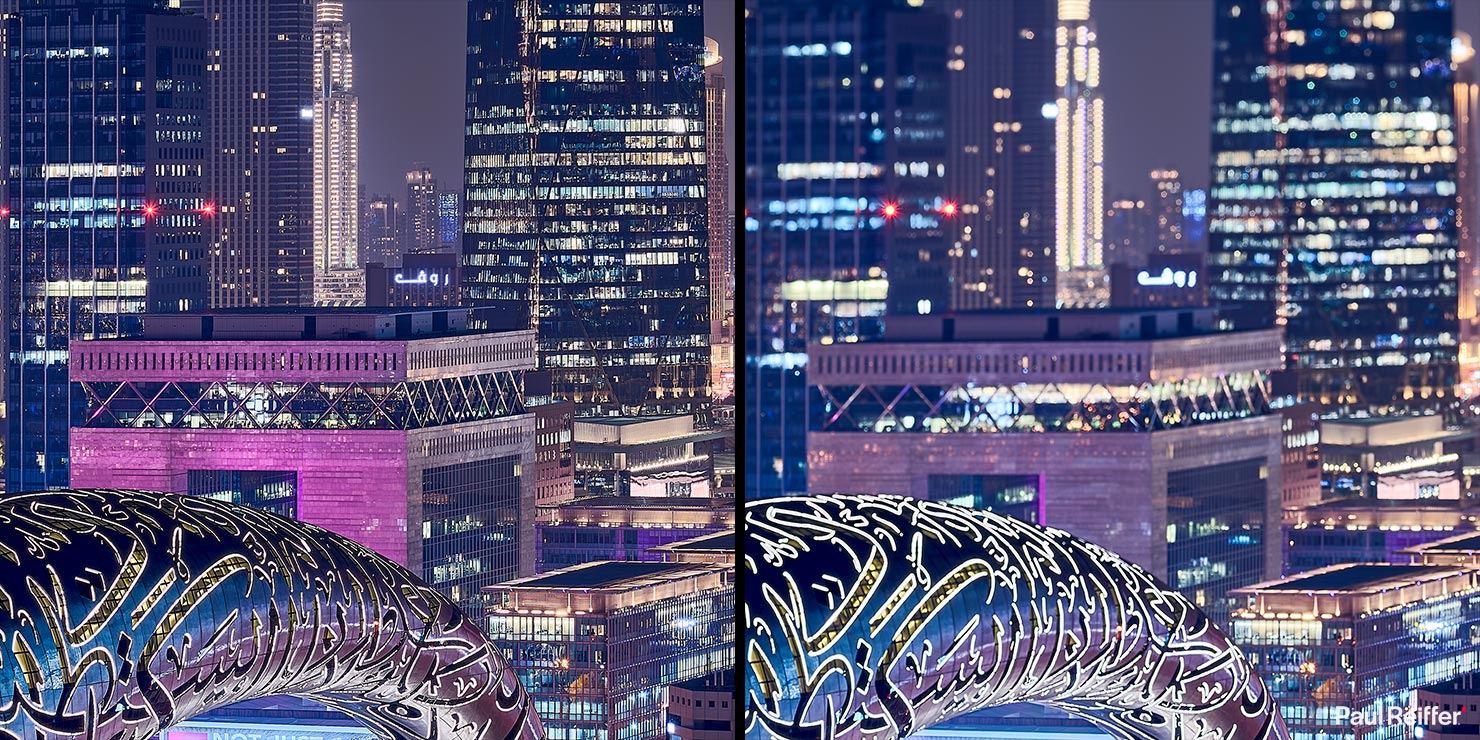
Is it my current style of shooting – reducing the depth of field of a grand vista in a city? Absolutely not.
Is it a technique I’ll be playing with more in future, on this lens as well as others? You bet.
And the launch of the Phase One XT Rodenstock 70mm Digaron f/5.6 just made shooting cityscapes a whole lot more fun for me…
Of course, there are other tilt/shift options out there – at many price points. But for me, this glass, on the XT camera, delivers so much in terms of image detail, integration, dynamic range and focus control, it’s now one of the only solutions I’d consider relying on out there in the field.
As always, this trip was also a learning opportunity – so what did we gain along the way this time?

- Dubai can actually boil an egg properly, after a few tries.
- A £12/$15 (+tax & service) pint of beer is MUCH better value than 2x £9/$11 half-pints.
- Ordering “the blue one” in a cocktail bar is risky – and not good for clarity the next morning.
- It IS possible to completely wear out a pair of trainers.
Oh, and as a final fun fact – during filming, throughout those tethered setups, in blistering hot heat and long blue hour shoots – I never plugged that MacBook Pro into power even once. Not bad…
